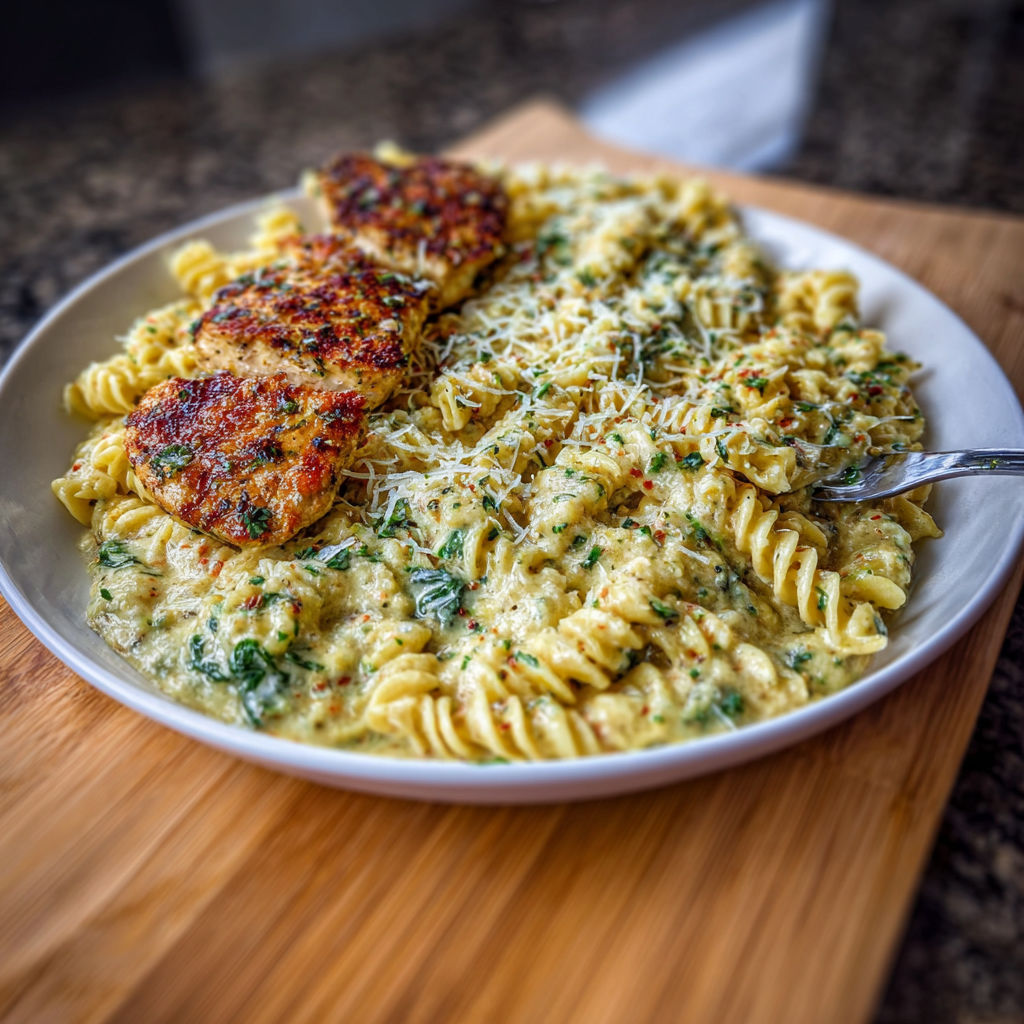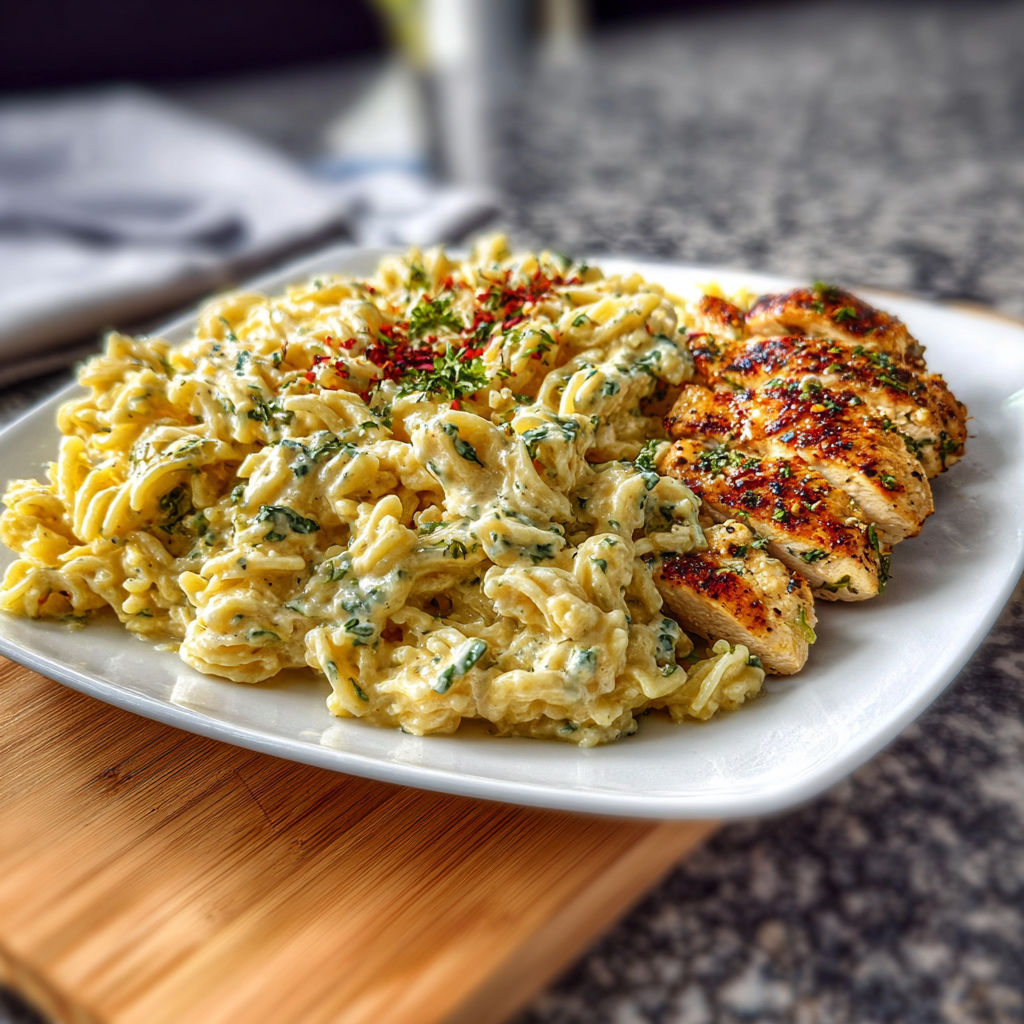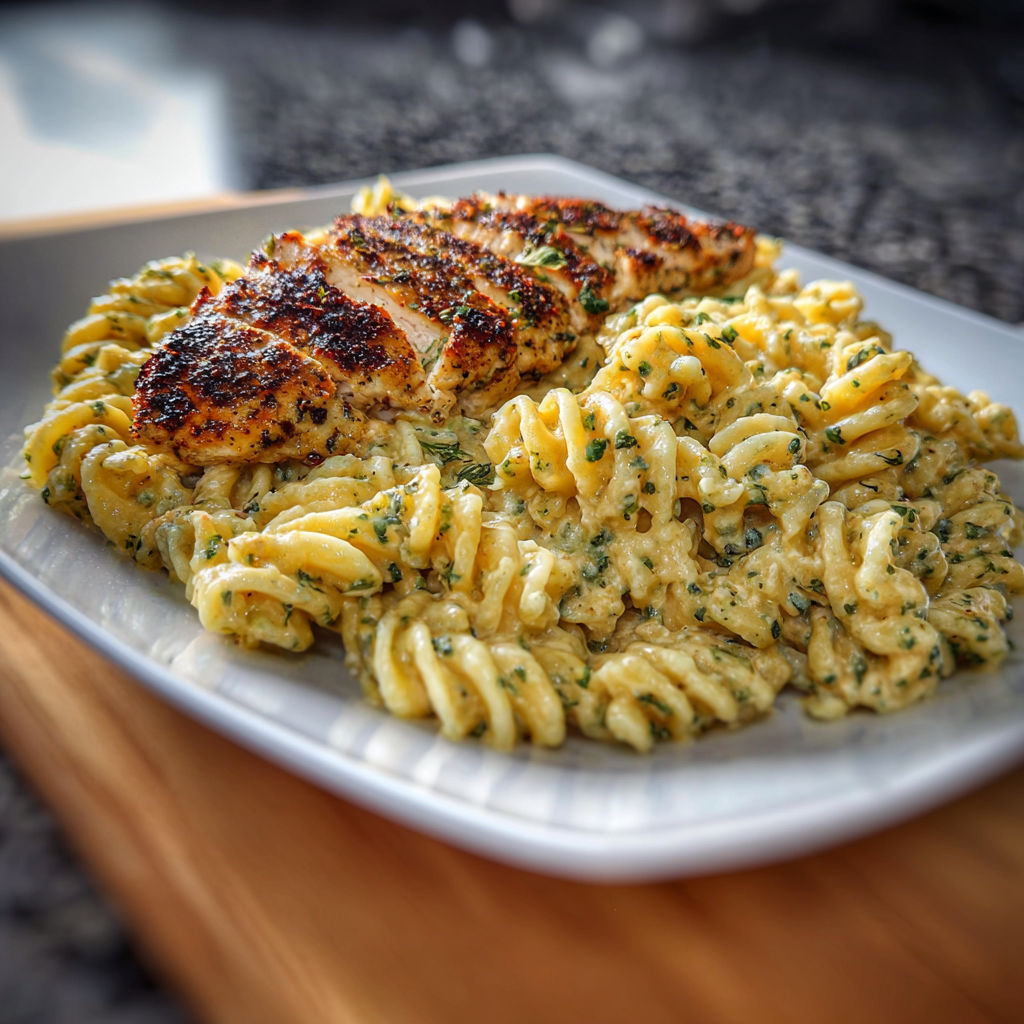 Pin
Pin
A big skillet of this creamy garlic parmesan chicken pasta is my answer for weeknights when I want comfort food that feels special but fits right into busy life The sauce is satiny and rich while juicy chicken cubes and tender pasta soak up every bit of garlic parmesan goodness
I was surprised how quickly this became a top request at our house Even my picky eater asks if this is on the menu whenever I mention pasta night
Gather Your Ingredients
- Boneless skinless chicken breasts: chicken stays juicy with quick high heat searing Look for firm plump pieces without excess moisture
- Twisted pasta like fusilli or penne: the spirals trap the creamy sauce well Choose bronze cut pasta for better cling
- Unsalted butter: the base for both browning chicken and lushly finishing the sauce European style butters boost flavor but any works
- Fresh garlic cloves: fresh is key here Pre peeled garlic tends to taste harsh so mince it yourself for best flavor
- Heavy cream: creates that velvety rich sauce Go for cream with a high butterfat content for the glossiest results
- Chicken broth: deglazes the pan and adds depth Choose low sodium broth so you control the salt level
- Freshly grated parmesan cheese: nothing beats blocks you grate yourself It melts silkily and packs sharp flavor
- Italian seasoning: adds herb notes that tie all the flavors together
- Red pepper flakes: optional for a background pop of heat
- Salt and black pepper: always taste and adjust at the end
- Fresh parsley: brightens and freshens the finished pasta Choose flat leaf for best flavor and chop just before serving
How to Make It
- Cook the Pasta and Sear the Chicken:
- Boil pasta in plenty of salted water until just al dente Reserve half a cup of pasta water before draining to use later for the sauce Pat chicken pieces dry then season on all sides with salt black pepper and half of the Italian seasoning In a roomy skillet melt one tablespoon butter over medium high heat When butter sizzles add chicken Spread pieces out and cook undisturbed for three to four minutes until golden on one side Flip and finish cooking another three to four minutes until cooked through and no longer pink inside Transfer chicken to a plate and keep warm
- Make the Garlic Parmesan Sauce:
- Lower skillet heat to medium and add remaining two tablespoons butter Let melt then add minced garlic and if you like a bit of heat sprinkle in red pepper flakes Stir constantly for half a minute just until garlic is aromatic but not browned Pour in chicken broth and use a wooden spoon to scrape up all the golden flavorful bits stuck to the bottom Add the heavy cream and remaining Italian seasoning Cook at a gentle simmer for two to three minutes until the sauce thickens a little Now reduce heat to low and gradually whisk in the parmesan cheese stirring until it becomes a smooth and creamy sauce
- Combine Everything and Serve:
- Add the cooked chicken along with any juices back to the pan with the sauce Tip in the drained pasta and use tongs to toss everything together Let the pasta soak in the sauce If it seems thick add reserved pasta water a splash at a time for a silkier cling Taste and adjust with more salt or pepper if needed Scatter chopped parsley over before serving

My mom once made this for a cozy Sunday lunch and the whole family lingered at the table just to savor the last creamy forkfuls
Flavor Boosters
Swap boneless thighs for breasts if you want richer chicken flavor Half and half works instead of cream for a lighter sauce though it will be less rich and thick Vegetable broth can stand in for chicken broth if needed just expect a milder taste
Serving Suggestions
Pair with a simple green salad and crusty bread Add roasted vegetables like broccoli or Brussels sprouts to make it a full meal Sprinkle with toasted pine nuts for crunch and extra flavor
Creative Twists
In spring toss in baby spinach or sautéed asparagus just before serving In summer top with cherry tomatoes or fresh basil for brightness In fall and winter mushrooms or sautéed kale work deliciously folded in

Try to use freshly grated cheese for the best sauce and do not skip resting your chicken before adding it in This creamy pasta brings everyone to the table
Common Questions About This Recipe
- → How do I get the sauce creamy and smooth?
Gradually whisking Parmesan into simmering cream over low heat ensures a silky, lump-free sauce.
- → Can I use a different pasta shape?
Penne, rotini, or fusilli work well because their spirals and tubes hold onto the creamy sauce.
- → What’s the best way to cook the chicken?
Sear cubed chicken over medium-high heat until golden and cooked through for maximum tenderness and flavor.
- → Is there a lighter alternative to heavy cream?
Half-and-half or a mix of milk and a tablespoon of flour can lighten the sauce, though it may be less rich.
- → How do I reheat leftovers without drying them out?
Add a splash of milk or broth before reheating gently on the stovetop to keep the sauce creamy.
- → What side dishes pair well with this dish?
A crisp green salad or roasted vegetables complement the hearty, creamy pasta beautifully.
